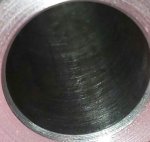I just bought a new set of dies: Forster Ultra Die Set FL & Micrometer Seater 308 National Match.
I went to full resize some federal ball load brass today and the casing will only fit 1/2 way into the die....tried a few with the same outcome. I tried a new Lapau brass, and while it's tight, it did fit.
Anyone else had this issue? And if so what would you suggest as "remedy".
Note: The stick is a new AI AE MKlll....only the 1 box of federal ball through it.
Thanks in advance for any suggestions.
I went to full resize some federal ball load brass today and the casing will only fit 1/2 way into the die....tried a few with the same outcome. I tried a new Lapau brass, and while it's tight, it did fit.
Anyone else had this issue? And if so what would you suggest as "remedy".
Note: The stick is a new AI AE MKlll....only the 1 box of federal ball through it.
Thanks in advance for any suggestions.
Last edited:







